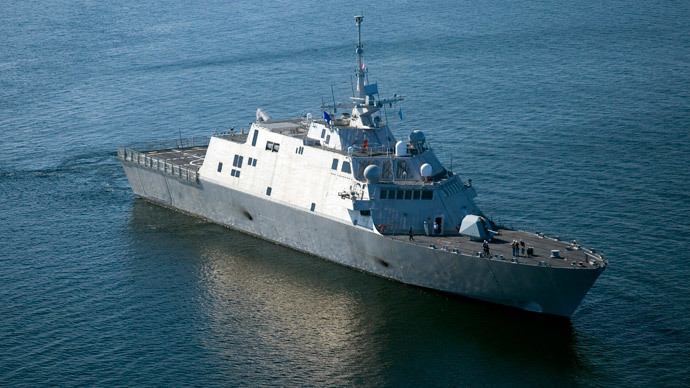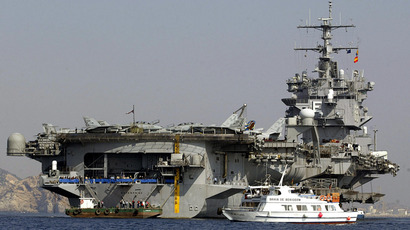US Navy’s troubled Littoral Combat Ship program could face the axe

Despite moving forward with the construction of 20 Littoral Combat Ships, the Navy is considering major changes to the beleaguered program – and one that may potentially involve replacing it entirely.
According toNational Defense Magazine, back in April the Navy released a request seeking information on technologies and methods that could be used to improve the current version of the Littoral Combat Ships (LCS). A separate information request, meanwhile, asked for designs for brand new ships.
A report on the submissions made to the Navy is scheduled to be completed on July 31, though the Navy stated that the United States does not expect to award contracts based on the proposals it receives.
“Why are we going out to industry? We want to collect their ideas and thoughts that they certainly have because...it will give us a better idea, I think, of what is technically feasible in the time frames we are talking about,” John Burrow, executive director of Marine Corps Systems Command, said to the magazine.
“It will give our team a good idea of what the risks are and help understand the cost associated with many of the systems and concepts that are going to be provided to us.”
After the task force responsible for looking through the proposals completes its survey, it will inform Navy leadership of the costs associated with each one. This information will help the Navy decide exactly how to continue forward with the LCS, if at all.
Burrow also told National Defense that the task force will determine whether the Navy can implement improvements into a modified version of the current LCS or if the service needs to design a new ship.
Specifically, the Navy is looking for proposals regarding the four main missions that the LCS was designed for: air warfare, surface warfare, undersea warfare, and mine hunting.
As RT has reported in the past, the LCS program has come under intense scrutiny over the past few years. While the ship has been criticized for insufficient armor and for sporting anemic offensive capabilities, a report from 2013 also found the fleet to be vulnerable to cyber attacks.
That same year, the Defense Department’s director of operational testing and evaluation said the LCS were “not expected to be survivable” in a “hostile combat environment.”
Due to performance concerns as well as ballooning budgets – the first LCS vessels cost $700 million each before the Navy trimmed the price tag down to about $300 million – the Pentagon announced in January that it was cutting its LCS orders down to 32 from the original 52.
Even so, several companies submitting proposals to the Navy argue that they could deliver ships just as capable as the LCS but at significantly reduced costs. Juliet Marine Systems’ stealth patrol boat, known as 'Ghost,' is one possibility. The ship costs just $10 million for each copy, and the company is working on building Ghosts the size of a corvette that would cost roughly $50 million each.
But while the company claims that Ghost can already carry out the same missions as the LCS, Juliet Marine CEO Greg Sancoff said the fact that it’s only designed for near-shore activities and isn’t as large as the LCS means selling it to the Navy is difficult.
“As you know, the Navy likes big ships,” he told National Defense. “Admirals want to stand on bridges of big ships. That’s why we have LCS. Our country has not readily adapted to new technologies in hydrodynamics.”














